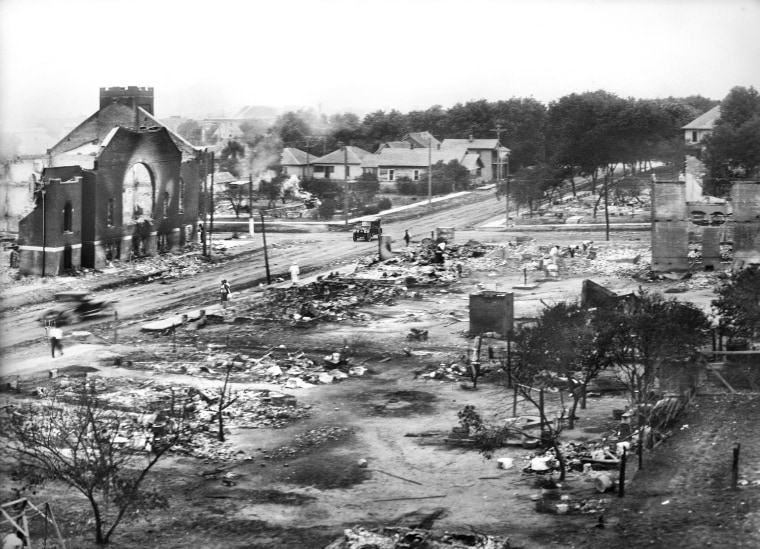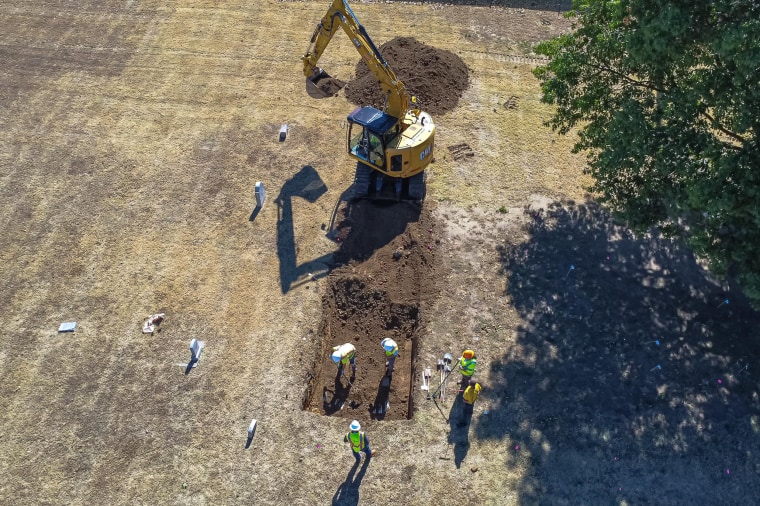Another 17 unmarked adult burials were found at Tulsa's Oaklawn Cemetery as the city continues its efforts to find the unidentified victims of the 1921 Tulsa Race Massacre.
Eleven fully-exposed graves and one partially exposed grave were found in an area west of headstones belonging to Reuben Everett and Eddie Lockard, the only known marked graves in the cemetery.
Experts then found another five graves, Oklahoma State Archaeologist Kary Stackelbeck said in an update Monday. Hand excavation work is underway to determine which of those burials are candidates for exhumation.
"Much like last year, we're trying to do every step of this process as respectfully as possible," she said.
Multiple experts, including a forensics team, are assisting in the collection of DNA samples from the exhumed remains. A pastor or another member of the clergy will also be present as the remains are transported to the forensic lab.
The excavation is expected to be completed by Nov. 18, the city said in a news release.
The city began a second excavation Wednesday as part of its yearslong investigation into the events of the 1921 attack on Greenwood District, an affluent African American community. At the time, the community's thriving business district and surrounding residential area were known as "Black Wall Street."
The massacre was sparked by rumors of an alleged incident involving a Black teenager, Dick Rowland, who was riding an elevator operated by a young white woman named Sarah Page.
Details of the May 30, 1921, incident "vary from person to person," the Tulsa Historical Society & Museum noted, and accounts "circulated among the city’s white community during the day, and became more exaggerated with each telling." Police ultimately arrested Rowland.

An inflammatory report in the May 31, 1921, edition of the Tulsa Tribune spurred a confrontation between armed Black and white groups outside the courthouse where Rowland was being held.
The society said shots were fired, and the Black group, which was outnumbered, "began retreating to the Greenwood District."
Things continued to escalate. On June 1, 1921, white rioters burned and looted Greenwood. Members of the state's National Guard were involved in the mass arrests of all or nearly all of Greenwood’s Black residents.
"Twenty-four hours after the violence erupted, it ceased," the society said. "In the wake of the violence, 35 city blocks lay in charred ruins, more than 800 people were treated for injuries and contemporary reports of deaths began at 36. Historians now believe as many as 300 people may have died."
The charges against Rowland were later dismissed. None of the criminal acts by the white rioters has ever been prosecuted or punished by the government, the society said, citing a 2001 Race Riot Commission Report.
Tulsa Mayor G.T. Bynum launched the investigation after oral reports indicated that there are mass graves in the city. An excavation last year in Oaklawn Cemetery resulted in 19 exhumations of human remains. The remains were taken to a lab for DNA analysis and then reburied.
